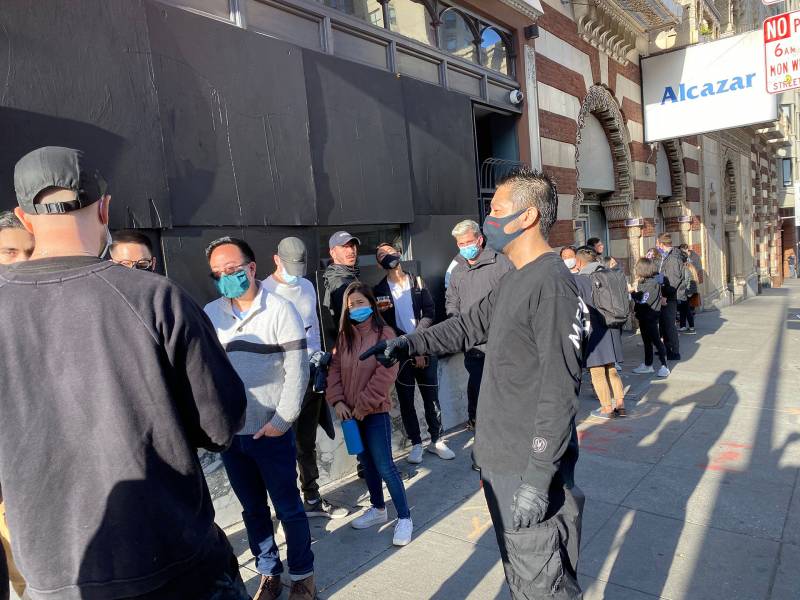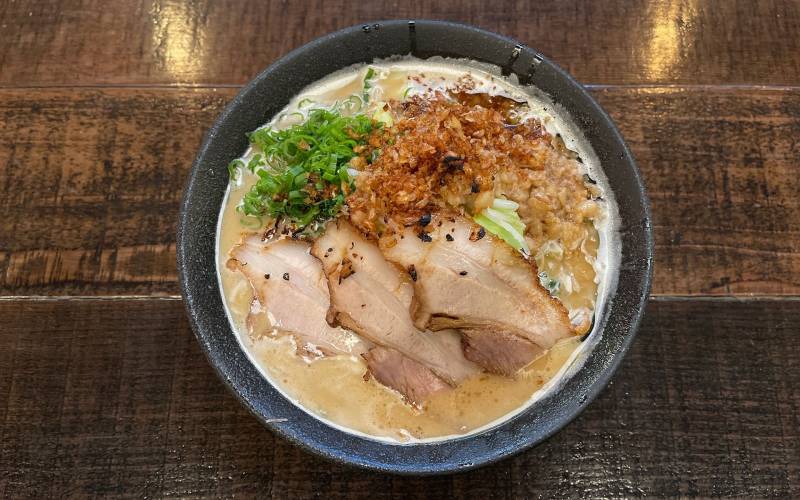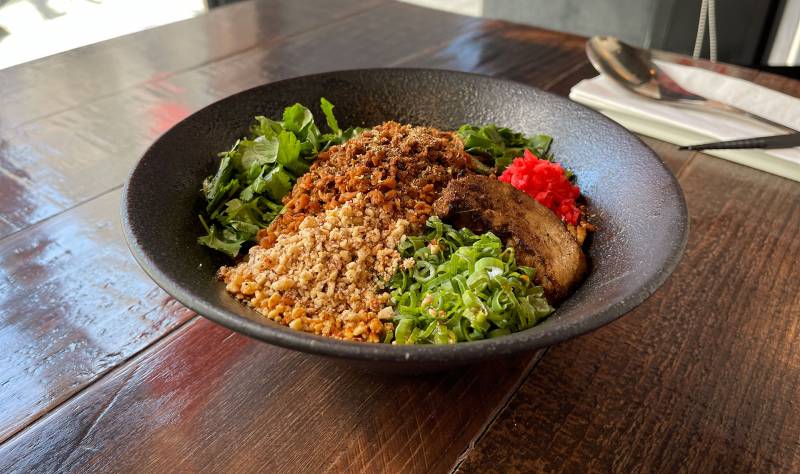Back in the before times, prior to the pandemic, Mensho Tokyo was best known for having some of the longest lines in San Francisco, and for good reason: It was a legit ramen shop from a legit ramen master, Tomoharu Shono, who’d already made a name for himself in Tokyo. Its signature dish was probably the richest—and, arguably, the most delicious—tori paitan style ramen in the Bay Area, featuring a creamy-white, chicken-based broth so thick with fat and collagen that it almost drank more like a gravy than a soup.
For the past eight months, however, Mensho Tokyo has been fully closed, with its windows boarded up. Until this past weekend, that is, when the Tenderloin restaurant quietly reopened as a “secret temporary pop-up” called “Ura Mensho,” serving just 30 bowls of ramen a night to start out. For the time being, it’s seating dine-in customers only, Wednesday through Sunday from 5–9 p.m.
Shono, who flew in from Japan a few weeks ago to gear up for the reopening, doesn’t plan on stopping there. Within the next month, he’ll also open the first U.S. outpost of Menya Shono, his flagship ramen restaurant in Tokyo, in San Rafael—the company’s first North Bay offshoot. Then, as early as this summer, its long-awaited kiosk in the new Twitter building food hall at 1355 Market Street is expected to open.

Co-owner Abram Plaut, a longtime Tokyo-based ramen critic (and Bay Area native) who partnered with Shono to open the SF outpost of Mensho Tokyo in 2016, says part of the reason they decided not to stay open through the pandemic was because the restaurant’s manager at the time had to return to Japan due to a family emergency. But the broader issue, Plaut says, is that ramen just isn’t a dish that’s very conducive to takeout. Yes, you can pack the soup separately from the toppings and noodles, but a proper bowl of ramen is such a precise orchestration of multiple components—the soup, tare (concentrated sauce), noodles, toppings, and fat—all of which need to be served at just the right temperature. “If you even let a bowl of ramen sit for 10 minutes, the noodles start to become soggy and soft; the fat starts to solidify and separate from the soup,” Plaut says. “It’s like you lose that magic.”
As a result, during the brief one- or two-month period when Mensho did offer takeout ramen kits, they came with so many different components for customers to reheat that it was almost like they were cooking the meal themselves. But while Mensho Tokyo won’t do takeout in its initial batch of offerings, Plaut says Shono has spent the better part of the past year working on developing more takeout- and delivery-friendly ramen, which the restaurant will unveil in the coming weeks. In part, that means experimenting with different kinds of noodles that better retain their texture.



